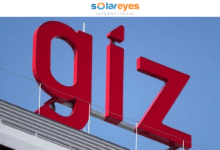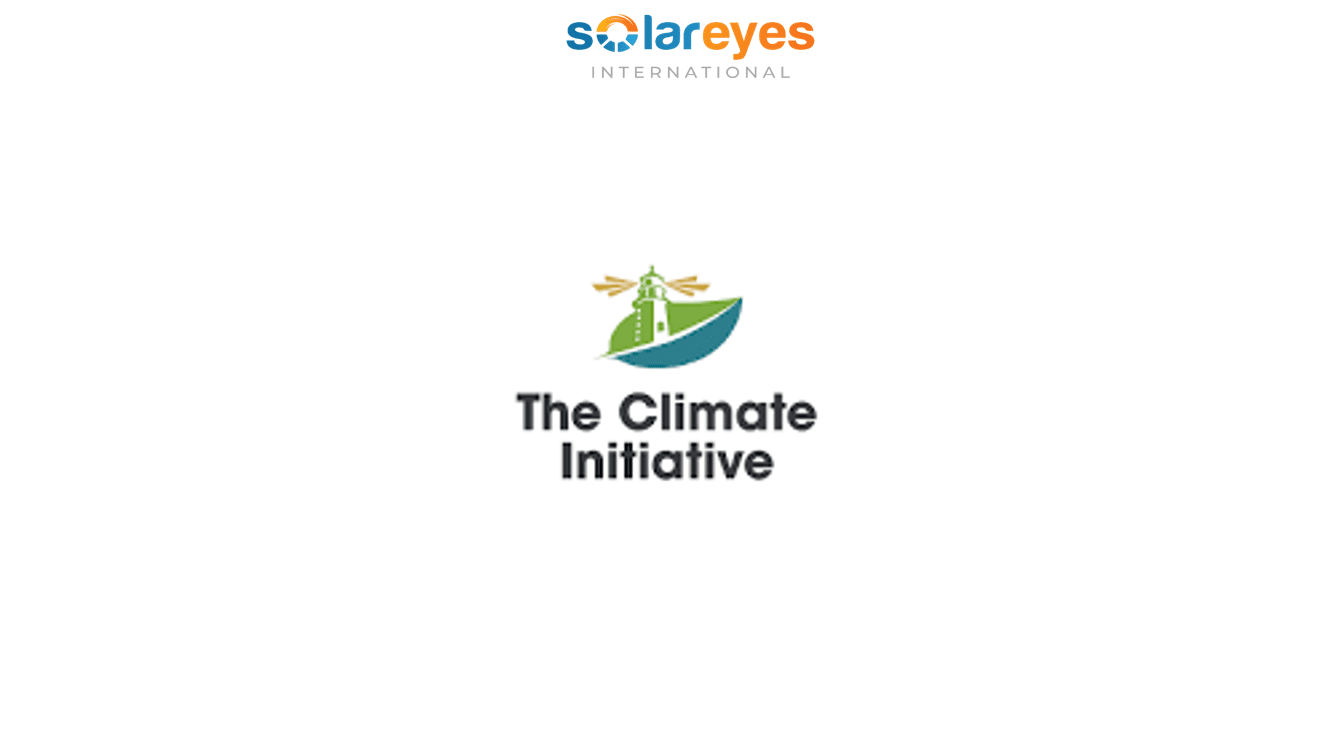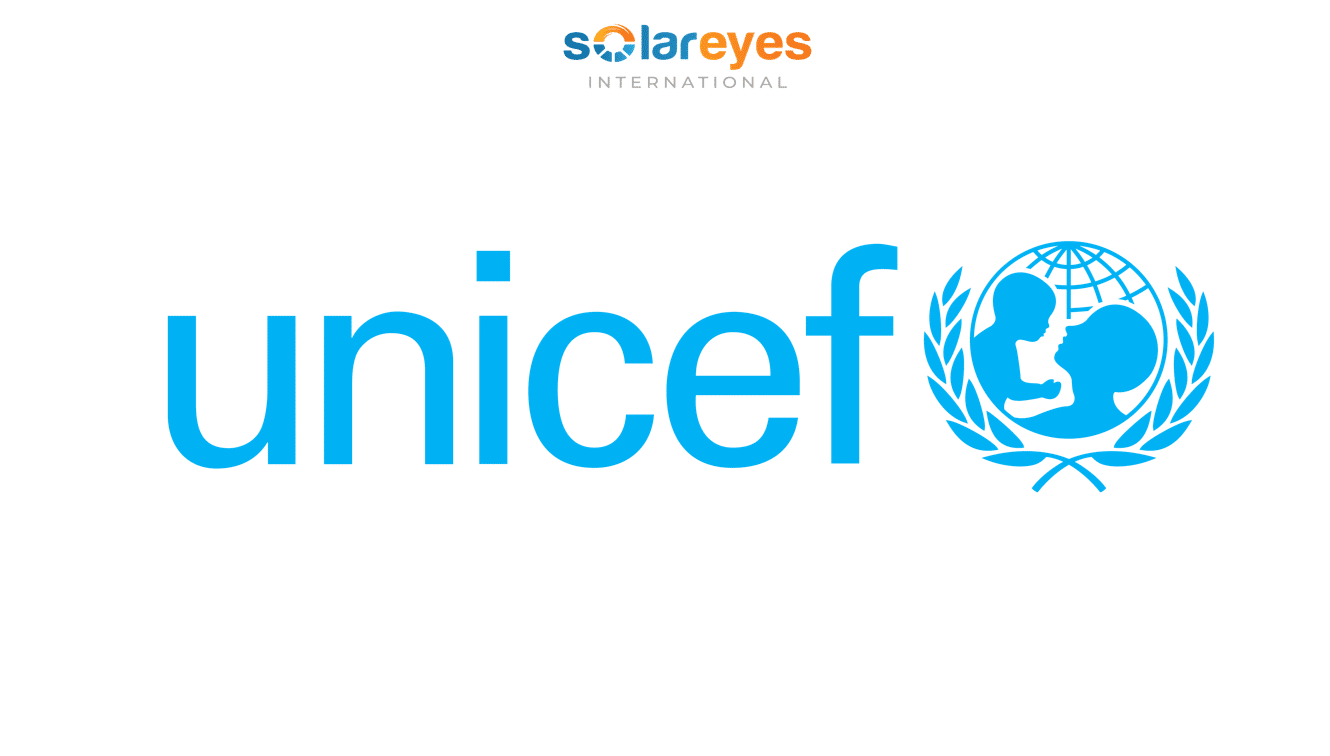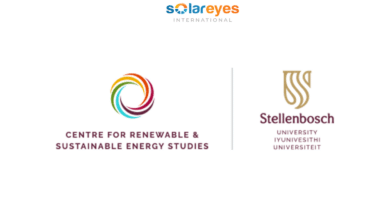Remote IRENA Consultant – Distributed PV Policies – USD$60,000
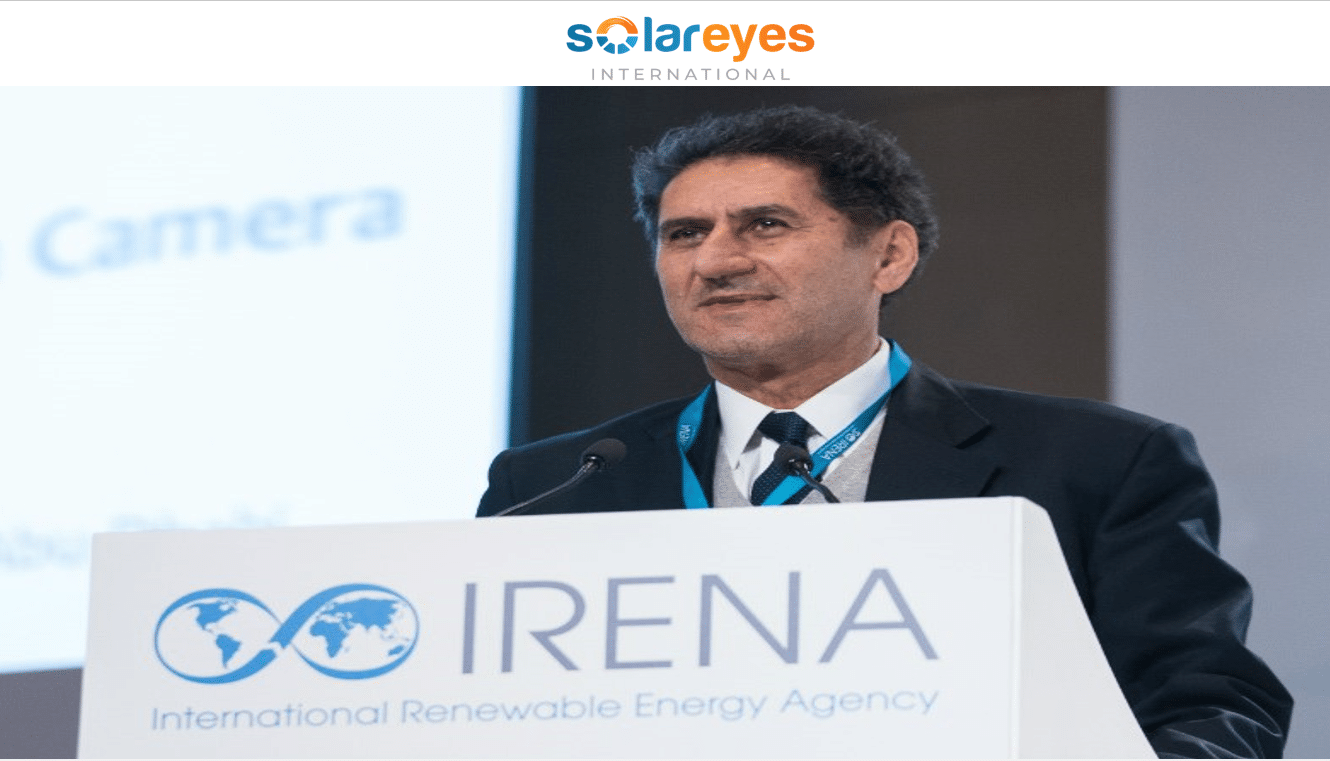
Remote IRENA Consultant – Distributed PV Policies – USD$60,000
Vacancy Announcement
Secretariat of the International Renewable Energy Agency (IRENA)
Knowledge, Policy, and Finance Centre (KPFC)
Analysing policies for distributed generation
Publication Date: 21 September 2023
Deadline for Application: 5 October 2023 (at midnight, Abu Dhabi Local Time)
Title: Consultant, Distributed PV Policies
Total Fees: USD 60,000.00
Contract Type: Individual Contractor /Consultant
Duration of Contract: One Year (with possible renewal)
Location: Remotely
Expected Date for Entry on Duty: As soon as possible
Remote IRENA Consultant – Distributed PV Policies – USD$60,000
Background
The International Renewable Energy Agency (IRENA) is an inter-governmental organisation, mandated by member states around the world to promote the widespread and increased adoption and sustainable use of renewable energy. This concerns all forms of energy produced from renewable sources in a sustainable manner, which include bioenergy, geothermal energy, hydropower, ocean, solar and wind energy.
IRENA supports countries’ capacity to design long-term enabling policy frameworks through providing analyses of policies and measures, including trends in their adoption, and best practices and lessons learnt in their design and adaptation to changing market conditions.
Graduate Trainee Opportunities at PUMA Energy – APPLY!
In addition, IRENA supports countries in maximising the socio-economic benefits of their energy transitions. In 2023, IRENA is carrying out an analysis of policies to support distributed generation using solar PV primarily for self-consumption.
The deployment of distributed solar PV for self-consumption plays an important role in the energy transition as it allows for improved electricity access in remote locations, greater resilience, and mitigated environmental impacts. With the falling cost of technology, distributed PV can help reduce energy costs for households and businesses, especially in the context of increasing grid electricity prices and unreliable services in some countries.
By generating electricity closer to the point of consumption, distributed generation can also reduce transmission and distribution costs and losses. Moreover, the development of the sector can create local jobs and value and bring significant benefits to communities.
x2 Internships Currently Hiring at WWF – APPLY NOW!
However, challenges hinder the adoption of distributed solar PV. These include high upfront costs and limited access to finance, the lack of skills needed, and the challenges related to grid integration and stability and those associated with the management of the two-way flow of electricity between the grid and distributed systems in cases where these systems feed into the grid. In some cases, such as city or community-level projects, land availability can also be an issue.
Current policies put in place to overcome these challenges largely focus on accelerating deployment, mainly through feed-in tariffs and net metering/billing for grid-connected systems. In some cases, such policies can be regressive, disproportionately affecting low-income communities, particularly when deployment reaches a certain scale and issues around the distribution of costs emerge.
For off-grid systems, policies focus on increasing the affordability of systems through loans and capital subsidies, but these also often benefit the highest-income users the most. To fully realize the potential socioeconomic benefits of distributed PV, it is necessary to adopt a more comprehensive approach that considers energy poverty, job creation, local value creation, end-of-life management, and more progressive policy design.
SIEMENS GAMESA is Looking for People to Fill these Multiple Open Positions – APPLY!
IRENA is undertaking a study to provide an overview of the current landscape of distributed solar PV for self-consumption in different contexts, its potential benefits and the existing challenges to its widespread adoption to achieve the targets set. The study focuses on the policies needed to fully realize the potential in terms of deployment in a fair and equitable way and maximise socio-economic benefits.
- Scope of work
The policies to support distributed solar PV greatly differ according to the objectives driving their deployment, the expected demand for power, level of access to grid power (along with its affordability and reliability), system capacity and existing infrastructure including transmission and distribution networks for grid-connected systems, land availability, level of development of the sector domestically, existing regulatory regime, among other factors. This is why the analysis will be undertaken in different contexts based on case studies.
The study focuses on distributed projects owned by individual households, corporations, and cities/communities. For each context the analysis begins with an introduction of the macroeconomic situation, the energy mix, expected electricity demand and uses to determine the technology (e.g., PV only or including storage) and scale (e.g. small-scale rooftop or larger-scale mounted with mini-grid) considering grid and land availability constraints, especially in crowded cities or Small Island Developing States (SIDS).
This is followed by the drivers for deployment. For example, from the users’ perspective these may include social responsibility or access to more affordable and/or reliable electricity in cases where grid electricity is expensive or unreliable, and from the government’s perspective drivers may include climate goals; minimising investment in grid extension, stability and enhancement; job creation and development of domestic businesses.
After that the barriers to the deployment of the identified solutions are analysed along with the possible business models and policies to address these barriers. Special attention is given to the progressive nature of policies discussed and measures to maximise the benefits. in addition, end of life policies and considerations will be discussed in each context (panels and batteries).
Table 1 Preliminary definition of contexts and criteria
| Context 1 | Context 2 | Context 3 | |
| Small Island Developing States (SIDS) | South Asia remote communities (islands and villages) | Developing countries with high electrification rates but frequent blackouts (e.g. Lebanon, Pakistan, South Africa) | |
| Main objectives driving deployment and expected demand | For users: access to reliable and affordable electricity For government: increase electricity access, reduce energy costs and vulnerability to imported fuels, minimise investment in grids, create jobs and support domestic businesses | For users: access to reliable and affordable electricity, community investment opportunity For government: increase electricity reliability and affordability, minimise investment in grids and create jobs and support domestic businesses | For users: complement access with a more reliable and affordable electricity source For government: increase electricity reliability and affordability, create jobs and support domestic businesses |
| Level of access to grid power (along with its affordability and reliability) | Limited access, high electricity costs in the absence of subsidies | Limited access, can be unaffordable and unreliable | Almost full access, frequent and long blackouts, unaffordable backup |
| System capacity and existing infrastructure | Needs expansion/improvement | Needs expansion/improvement | Needs expansion/improvement |
| Land availability | Limited | Case specific. Can be made available at the community level | Case specific. Can be made available at the community level |
| Level of development of the sector domestically (including skills to install) | Needs support | Needs support | Developing |
| Access to finance | Relies on public and foreign investments | Relies on public and foreign investments | Relies on public and foreign investments |
- Tasks and Responsibilities
To support this work, the consultant will collaborate with the IRENA Secretariat to undertake the following tasks:
Comprehensive policy framework: layout the policy instruments available to support the deployment of distributed PV for self-consumption. Aligned with IRENA’s comprehensive policy framework[1], discuss the deployment and other policies needed to support the rapid adoption of distributed PV. Based on Table 1, identify the policies that are suitable/needed in all contexts with references to context-specific differences that will be further elaborated in the case studies.
Case study – Context 1: identify the instruments needed to support the deployment of distributed PV in the context of Small Island Developing States where consumers are mainly driven by the need for reliable and affordable electricity and governments seek to increase electricity access, reduce energy costs and vulnerability to imported fuels, minimise investment in grids, create jobs and support domestic enterprises. These countries are generally charaterised by the lack of access to reliable electricity, limited land and skills availability. More information on the context will be provided by the consultant. But in this context, the analysis will be tailored to the productive uses (tourism, fisheries, desalination, healthcare, etc.)
Top 5 PAYGO Platforms for Solar Home Systems: Empowering Off-Grid Communities
Case study – Context 2: identify the instruments needed to support the deployment of distributed PV in the context of South Asian remote communities (remote or island) where consumers are mainly driven by the need for more reliable and affordable electricity and by community investment opportunities, and governments seek to increase electricity reliability and affordability, minimise investment in grids and create jobs and support domestic businesses. These countries are generally charaterised by lack of access to reliable electricity and limited skills availability. More information on the context will be provided by the consultant.
Case study – Context 3: identify the instruments needed to support the deployment of distribtued PV in the context of developing countries with high electrification rates but frequent blackouts (Lebanon, Pakistan, South Africa) where consumers are mainly driven by access to reliable affordable electricity and governments seek to increase electricity reliability and affordability, create jobs and support domestic businesses. These countries are generally charaterised by lack of access to reliable electricity, affordable finance, and skills. More information on the context will be provided by the consultant.
Recommendations on public policy and funds: synthesise the findings of the case studies into one chapter to provide recommendations on public policy and funds (national and through international collaboration) to deploy distributed solar PV at the scale needed to achieve the set goals.
SIEMENS GAMESA is Looking for People to Fill these Multiple Open Positions – APPLY!
- Required profile: Remote IRENA Consultant – Distributed PV Policies – USD$60,000
IRENA is seeking a consultant with substantive proven experience and capacity to provide the required content, analyses and support as outlined above. In particular, the consultant is expected to have:
- Advanced University degree (Master’s or equivalent) in economics, energy, social sciences, or other fields related to renewable energy;
- At least ten years of work experience in fields of energy markets, regulatory policies, economic analysis and/or financing of energy systems;
- Strong knowledge of energy sector policies;
- Ability to write clearly and concisely;
- Language: Excellent command of written and spoken English.
- Terms of payment
Payment per deliverable as per the schedule below:
| Deliverable number | Deliverable | Date | Payment (USD) |
| D1 | IRENA’s comprehensive policy framework – Draft 1 | End October 2023 | 0 |
| D2 | IRENA’s comprehensive policy framework – Draft 2 | End January 2024 | 7,500 |
| D3 | IRENA’s comprehensive policy framework – Draft 3 | End of June 2024 | 2,500 |
| D4 | Case study – Context 1 – Draft 1 | End December 2023 | 0 |
| D5 | Case study – Context 1 – Draft 2 | End March 2024 | 15,000 |
| D6 | Case study – Context 1 – Draft 3 | End of June 2024 | 5,000 |
| D7 | Case study – Context 2 – Draft 1 | End December 2023 | 0 |
| D8 | Case study – Context 2 – Draft 2 | End March 2024 | 7,500 |
| D9 | Case study – Context 2 – Draft 3 | End of June 2024 | 2,500 |
| D10 | Case study – Context 3 – Draft 1 | End March 2024 | 0 |
| D11 | Case study – Context 3 – Draft 2 | End April 2024 | 7,500 |
| D12 | Case study – Context 3 – Draft 3 | End of June 2024 | 2,500 |
| D13 | Recommendations on public policy and funds – Draft 1 | End May 2024 | 0 |
| D14 | Recommendations on public policy and funds – Draft 2 | End June 2024 | 7,500 |
| D15 | Recommendations on public policy and funds – Draft 3 | End of August 2024 | 2,500 |
| Total | 60,000 |
[1] See IRENA’s World Energy Transitions Outlook 2021 report as a reference for the comprehensive policy framework.
FOLLOW US ON SOCIAL MEDIA
Follow us on LINKEDIN, FACEBOOK, TELEGRAM GROUP and WHATSAPP.
*** ALSO CHECK: HOW TO SIZE A SOLAR SYSTEM – 5 clear steps anyone can follow
HOW TO START A SOLAR COMPANY – do these 6 things and make money through solar
How to Identify Fake Solar Products
SOLAR PANEL LOSSES: All you Need to Know + Tips on how to avoid them
SOLAR PV MODULE MANUFACTURING PROCESS EXPLAINED – from solar cells to solar panel
10 Surprising Ways Solar Energy Can Save You Money Today!
Opportunities for Solar Energy Development in Europe
FREE TOOLS to use for Solar Panel Tilt Angle Calculation and Installation – for any location
How Solar Panels Can Increase Your Home Value
HOW TO IDENTIFY FAKE SOLAR PRODUCTS – 6 things to check
Some Examples of where People have Fallen Victim to Fake Solar Products
How to Choose Solar Panel Brands
Top 10 Solar Panel Companies Driving the Renewable Energy Revolution
Best Solar Cell Efficiency Chart – National Renewable Energy Laboratory(NREL)

